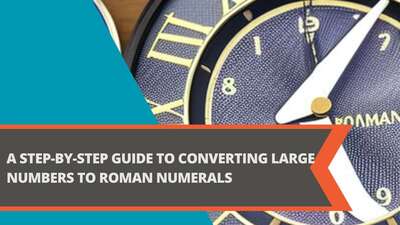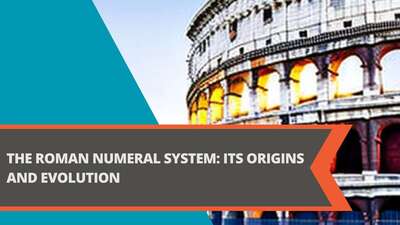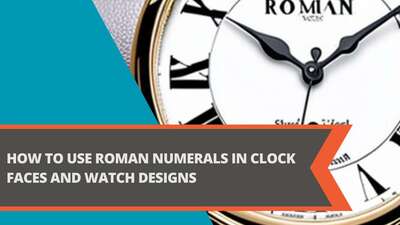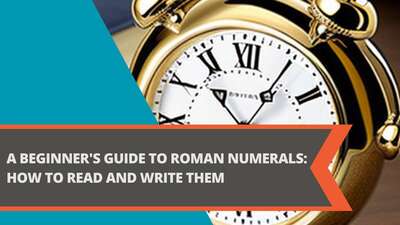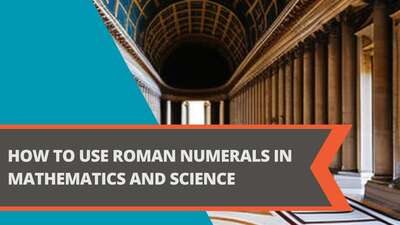Roman Numeral Birthday Converter: Definition, Formula, Examples, and FAQ
- Definition of Roman Numerals
- Formula for Converting a Date to Roman Numerals
- Examples of Converting Dates to Roman Numerals
- Explanation of Conversion Process
- Question and Answer FAQ
- Q: Why were Roman numerals used?
- Q: Are Roman numerals still used today?
- Q: How do you convert large numbers to Roman numerals?
- Q: What is the highest number that can be represented using Roman numerals?
- Conclusion
If you're planning to celebrate your birthday using Roman numerals, you may be wondering how to convert your birthdate into this ancient numerical system. Fortunately, it's a straightforward process, and with a little bit of practice, you'll be able to convert any date into its Roman numeral equivalent. In this article, we'll explain what Roman numerals are, how to convert your birthdate, and provide examples to help you master this system.
Definition of Roman Numerals
Roman numerals are a numerical system that was used in ancient Rome and other parts of Europe from around 500 BCE to the 14th century. Unlike the modern decimal system, which uses Arabic numerals (0-9), Roman numerals use letters from the Latin alphabet to represent values. The basic Roman numerals are as follows:
| Symbol | Value |
|---|---|
| I | 1 |
| V | 5 |
| X | 10 |
| L | 50 |
| C | 100 |
| D | 500 |
| M | 1,000 |
The letters can be combined to create larger numbers. When a smaller number is written before a larger number, the smaller number is subtracted from the larger number. For example, IV is 4, and IX is 9. When a smaller number is written after a larger number, the smaller number is added to the larger number. For example, VI is 6, and XI is 11.
Formula for Converting a Date to Roman Numerals
To convert a date to Roman numerals, you need to break it down into its component parts and then convert each part separately. The basic formula is as follows:
- Write the year using Roman numerals.
- Write the month using Roman numerals.
- Write the day using Roman numerals.
For example, if your birthdate is January 1, 2000, you would write it as follows:
- 2000 = MM
- January = I
- 1 = I
So your birthdate in Roman numerals is MMI I.
Examples of Converting Dates to Roman Numerals
Let's look at a few more examples to help you get the hang of converting dates to Roman numerals.
Example 1: December 25, 1990
- 1990 = MCMXC
- December = XII
- 25 = XXV
So December 25, 1990, is MCMXCII XXV in Roman numerals.
Example 2: March 10, 2023
- 2023 = MMXXIII
- March = III
- 10 = X
So March 10, 2023, is MMXXIII III X in Roman numerals.
Explanation of Conversion Process
Now that you've seen a few examples, let's walk through the conversion process in more detail.
Step 1: Write the year using Roman numerals. To do this, start with the leftmost digit and convert it to Roman numerals. Then move to the next digit and convert it, and so on. For example, to convert 2023, we start with the 2, which is MM. Then we add the 0, which is nothing. Then we add the 2, which is XX. And finally, we add the 3, which is III. So 2023 is MMXXIII in Roman numerals.
Step 2: Write the month using Roman numerals. To do this, consult the chart of basic Roman numerals and find the Roman numeral that corresponds to the month. For example, March is III.
Step 3: Write the day using Roman numerals. To do this, use the same process as for the year. For example, 10 is X.
Once you have converted each component, simply write them in order to get the complete Roman numeral representation of the date.
Question and Answer FAQ
Q: Why were Roman numerals used?
A: Roman numerals were used because they were the numerical system used by the Romans, who were a dominant cultural and political force in Europe for centuries. They were also used because they could be easily carved into stone, making them useful for inscriptions on buildings and monuments.
Q: Are Roman numerals still used today?
A: Yes, Roman numerals are still used today in a variety of contexts. For example, they are used to number the chapters in books and the parts in legal documents. They are also used in the names of monarchs and popes, and in the copyright dates of movies and television shows.
Q: How do you convert large numbers to Roman numerals?
A: To convert large numbers to Roman numerals, simply follow the same process as for smaller numbers, but combine the Roman numerals for each digit. For example, to convert 2,000, you would write it as MM, which is the Roman numeral for 2,000. To convert 3,000, you would write it as MMM, which is the Roman numeral for 3,000.
Q: What is the highest number that can be represented using Roman numerals?
A: The highest number that can be represented using Roman numerals is 3,999, which is written as MMMCMXCIX.
Conclusion
Now that you understand how to convert dates to Roman numerals, you can use this system to add a touch of ancient charm to your next birthday celebration. Remember that the process is simple: write the year, month, and day using Roman numerals, and then combine them in the correct order. With a little bit of practice, you'll be able to quickly and easily convert any date to its Roman numeral equivalent. And who knows, maybe you'll even impress your friends and family with your newfound knowledge!
Just remember to double-check your work to ensure that you've converted the date correctly. Roman numerals can be tricky, and it's easy to make mistakes. But with a little bit of attention to detail, you'll be able to master this ancient numerical system in no time.
So go ahead and give it a try! Who knows, you might just find that you enjoy using Roman numerals so much that you start incorporating them into other areas of your life as well.
